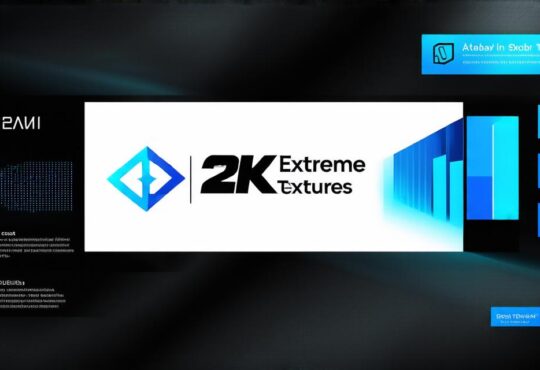
Exploring the Essentials of Blockchain DApp Development
Blockchain technology is revolutionizing the way we conduct transactions and store data online. The decentralized nature of blockchain makes it an attractive solution for industries such as finance, healthcare, and supply chain management. With the growing popularity of blockchain, there has been a surge in demand for developers to create dApps (decentralized applications) that can harness the power of this technology. In this article, we will explore the essentials of blockchain DApp development and discuss how developers can optimize their dApps for success.
What is a Blockchain DApp?
A blockchain DApp is a type of application that runs on a blockchain network. Unlike traditional applications, which are centralized and rely on a single point of failure, DApps are decentralized, meaning they are not controlled by any one entity or organization. Instead, they run on a distributed network of computers, making them more secure and resilient to attacks.
The most well-known blockchain DApp is Ethereum, which allows developers to create smart contracts that can automate complex processes and execute transactions without the need for intermediaries. Other popular blockchain DApps include Filecoin, IPFS, and Chainlink.
Why Develop a Blockchain DApp?
Developing a blockchain DApp can provide numerous benefits to businesses and organizations, including:
- Security: Since DApps are decentralized, they are more resistant to attacks than traditional applications.
- Transparency: All transactions on a blockchain are recorded on a public ledger, making it easy to track and verify the authenticity of data. This provides greater transparency and accountability, which can help build trust between parties.
- Efficiency: DApps can automate complex processes and execute transactions without the need for intermediaries, reducing the time and cost of traditional methods.
- Accessibility: Since DApps are accessible from anywhere with an internet connection, they can provide greater access to services and information, particularly in underserved regions.
The Essentials of Blockchain DApp Development
To develop a successful blockchain DApp, developers must consider several essential factors, including:
- Understanding the use case: Before starting development, it is crucial to understand the problem that the DApp will solve and how it will do so. Developers should conduct thorough research and analysis to ensure that their DApp meets a genuine need and provides value to users.
- Choosing the right blockchain platform: There are several blockchain platforms available, each with its strengths and weaknesses. Developers must choose the right platform based on the requirements of their use case and the resources they have available.
- Designing a user-friendly interface: A DApp’s success depends on its ability to attract and retain users. Therefore, it is essential to design a user-friendly interface that is intuitive and easy to use. This includes creating clear instructions, providing helpful tips and tricks, and ensuring that the application is accessible from any device.
- Ensuring security: As mentioned earlier, DApps are more secure than traditional applications due to their decentralized nature. However, developers must still take steps to ensure the security of their DApp, such as implementing strong encryption protocols, conducting regular security audits, and providing users with control over their data.
- Testing and optimization: Once a DApp is developed, it is essential to test it thoroughly to identify and fix any bugs or performance issues. Developers should also optimize their DApp for speed and efficiency, as this can improve the user experience and increase adoption rates.
- Building a community: A successful DApp relies on a vibrant community of users who contribute to its development and promote it to others. Therefore, developers must create opportunities for users to provide feedback, participate in decision-making processes, and share their knowledge and expertise with others.

Case Studies in Blockchain DApp Development
There are several successful blockchain DApps that have demonstrated the potential of this technology. Here are a few examples:
- Cryptokitties: Cryptokitties is a blockchain game that allows users to collect and breed unique digital cats. The game has been incredibly popular since its launch in 2017, with over $20 million in transactions taking place on the Ethereum network. Cryptokitties provides a fun and interactive way for users to learn about blockchain technology and demonstrate its potential in the entertainment industry.
- 0x: 0x is a decentralized exchange platform that allows users to trade cryptocurrencies without intermediaries. The platform has been incredibly successful, with over $1 billion in transactions taking place on the Ethereum network. 0x provides a secure and efficient way for users to trade cryptocurrencies, demonstrating the potential of blockchain technology in the finance industry.
- Filecoin: Filecoin is a decentralized file storage platform that allows users to store and access data securely and efficiently. The platform has been successful, with over 50 million files stored on the network. Filecoin provides a scalable and cost-effective solution for storing large amounts of data, demonstrating the potential of blockchain technology in the healthcare and supply chain management industries.
The Future of Blockchain DApp Development
As blockchain technology continues to evolve, we can expect to see more innovative and exciting DApps emerging in various industries. The future of blockchain DApp development will likely be shaped by advances in smart contract technology, the increasing adoption of decentralized finance (DeFi) applications, and the growing interest in non-fungible tokens (NFTs).
Smart contracts are self-executing contracts with the terms of the agreement between buyer and seller being directly written into lines of code. Smart contracts enable the automation of complex processes and the execution of transactions without intermediaries, making them an attractive solution for industries such as finance and healthcare. As smart contract technology continues to improve, we can expect to see more sophisticated and efficient DApps emerging in these industries.
DeFi is a subset of blockchain technology that allows users to access financial services and tools without intermediaries. DeFi applications, such as lending platforms and decentralized exchanges, are becoming increasingly popular as they provide greater transparency, efficiency, and accessibility compared to traditional financial systems. As the adoption of DeFi continues to grow, we can expect to see more innovative DApps emerging in this space.



